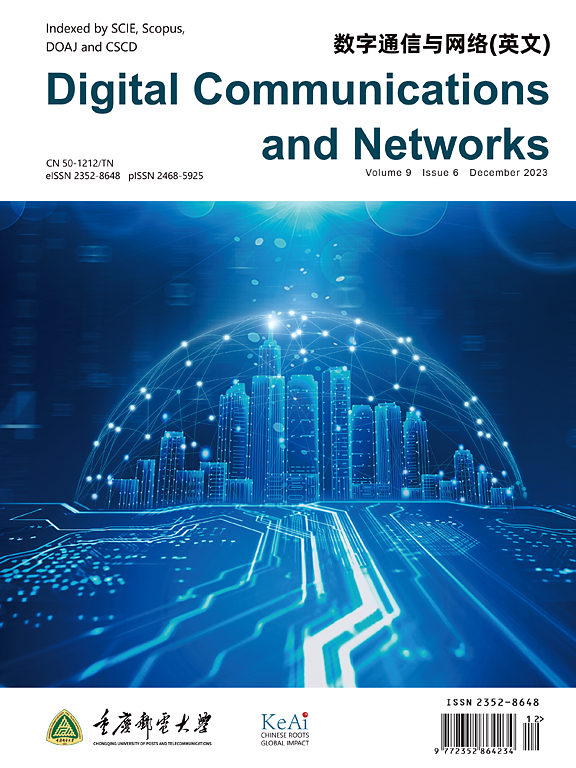YOLO-SDLUWD:基于 YOLOv7 的复杂背景下红外图像小目标检测网络
IF 7.5
2区 计算机科学
Q1 TELECOMMUNICATIONS
引用次数: 0
摘要
红外小目标探测以其高突防能力和探测距离在许多领域有着重要的应用。本文介绍了一种基于YOLOv7网络的“YOLO-SDLUWD”探测器,用于复杂红外背景下的小目标检测。“SDLUWD”是指空间深度层遵循卷积层结构(SD-Conv)和线性上采样融合路径聚合特征金字塔网络(LU-PAFPN)以及基于归一化高斯Wasserstein距离损失(WD-loss)函数的训练策略的结合。“YOLO-SDLUWD”旨在降低骨干网最大池化下采样层丢失重要特征信息时的检测精度,支持高维和低维特征信息的交互和融合,克服小目标图像中噪声引起的虚警预测。该探测器在IRIS-AG上实现了[email protected]: 90.4%和[email protected]:0.95(48.5%),比YOLOv7-tiny提高了9%-11%,在精度和速度方面优于其他最先进的目标探测器。本文章由计算机程序翻译,如有差异,请以英文原文为准。
YOLO-SDLUWD: YOLOv7-based small target detection network for infrared images in complex backgrounds
Infrared small-target detection has important applications in many fields due to its high penetration capability and detection distance. This study introduces a detector called “YOLO-SDLUWD” which is based on the YOLOv7 network, for small target detection in complex infrared backgrounds. The “SDLUWD” refers to the combination of the Spatial Depth layer followed Convolutional layer structure (SD-Conv) and a Linear Up-sampling fusion Path Aggregation Feature Pyramid Network (LU-PAFPN) and a training strategy based on the normalized Gaussian Wasserstein Distance loss (WD-loss) function. “YOLO-SDLUWD” aims to reduce detection accuracy when the maximum pooling downsampling layer in the backbone network loses important feature information, support the interaction and fusion of high-dimensional and low-dimensional feature information, and overcome the false alarm predictions induced by noise in small target images. The detector achieved a [email protected] of 90.4% and [email protected]:0.95 of 48.5% on IRIS-AG, an increase of 9%-11% over YOLOv7-tiny, outperforming other state-of-the-art target detectors in terms of accuracy and speed.
求助全文
通过发布文献求助,成功后即可免费获取论文全文。
去求助
来源期刊

Digital Communications and Networks
Computer Science-Hardware and Architecture
CiteScore
12.80
自引率
5.10%
发文量
915
审稿时长
30 weeks
期刊介绍:
Digital Communications and Networks is a prestigious journal that emphasizes on communication systems and networks. We publish only top-notch original articles and authoritative reviews, which undergo rigorous peer-review. We are proud to announce that all our articles are fully Open Access and can be accessed on ScienceDirect. Our journal is recognized and indexed by eminent databases such as the Science Citation Index Expanded (SCIE) and Scopus.
In addition to regular articles, we may also consider exceptional conference papers that have been significantly expanded. Furthermore, we periodically release special issues that focus on specific aspects of the field.
In conclusion, Digital Communications and Networks is a leading journal that guarantees exceptional quality and accessibility for researchers and scholars in the field of communication systems and networks.
 求助内容:
求助内容: 应助结果提醒方式:
应助结果提醒方式:


